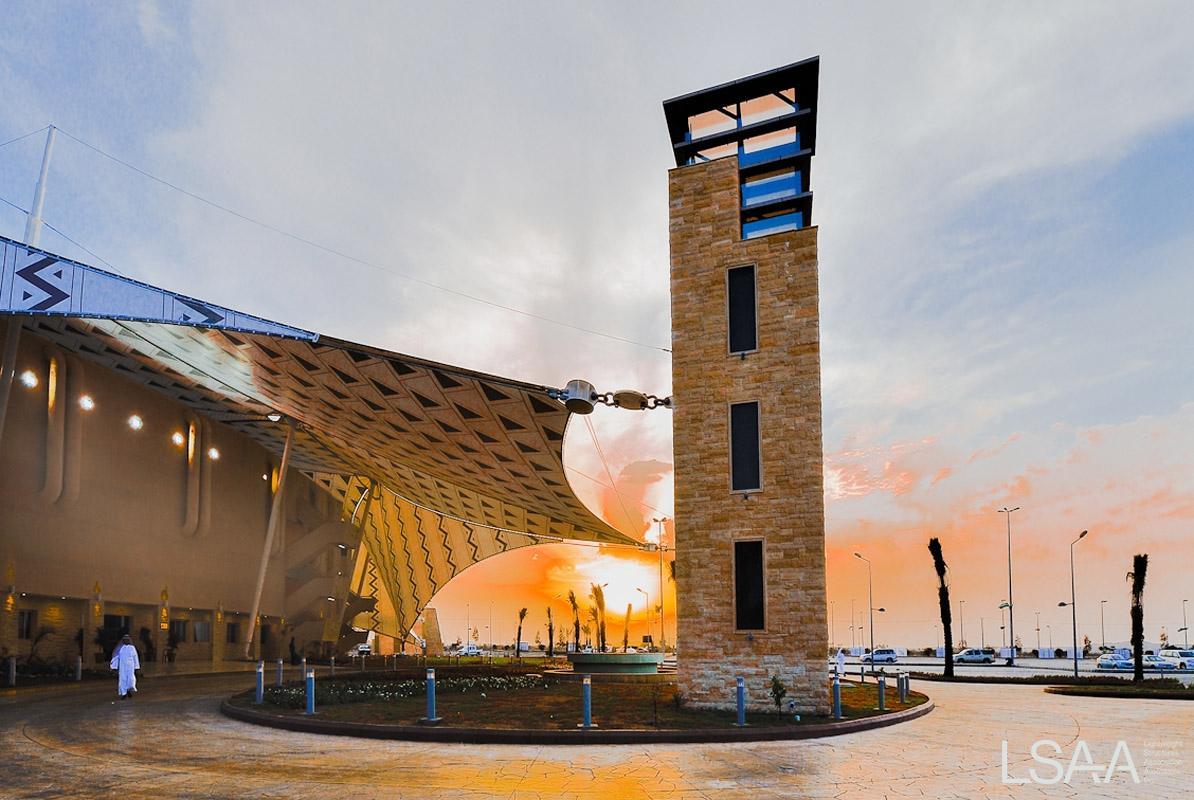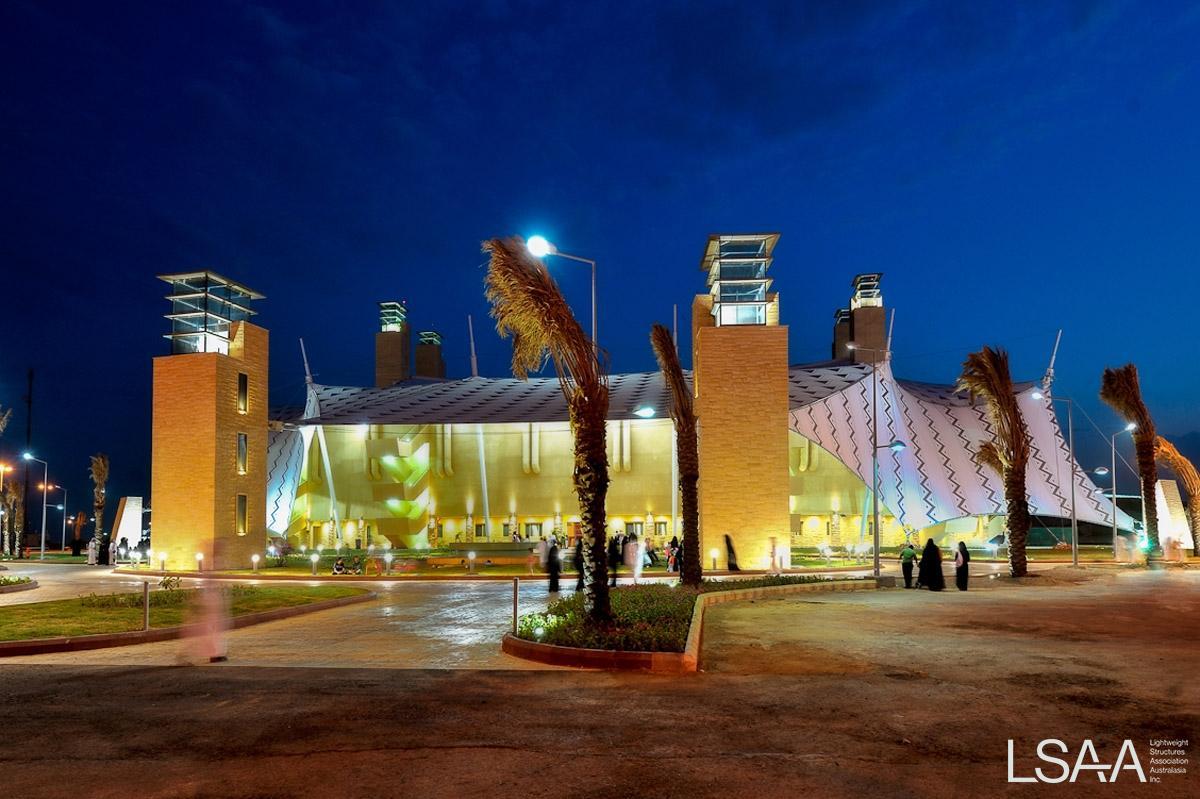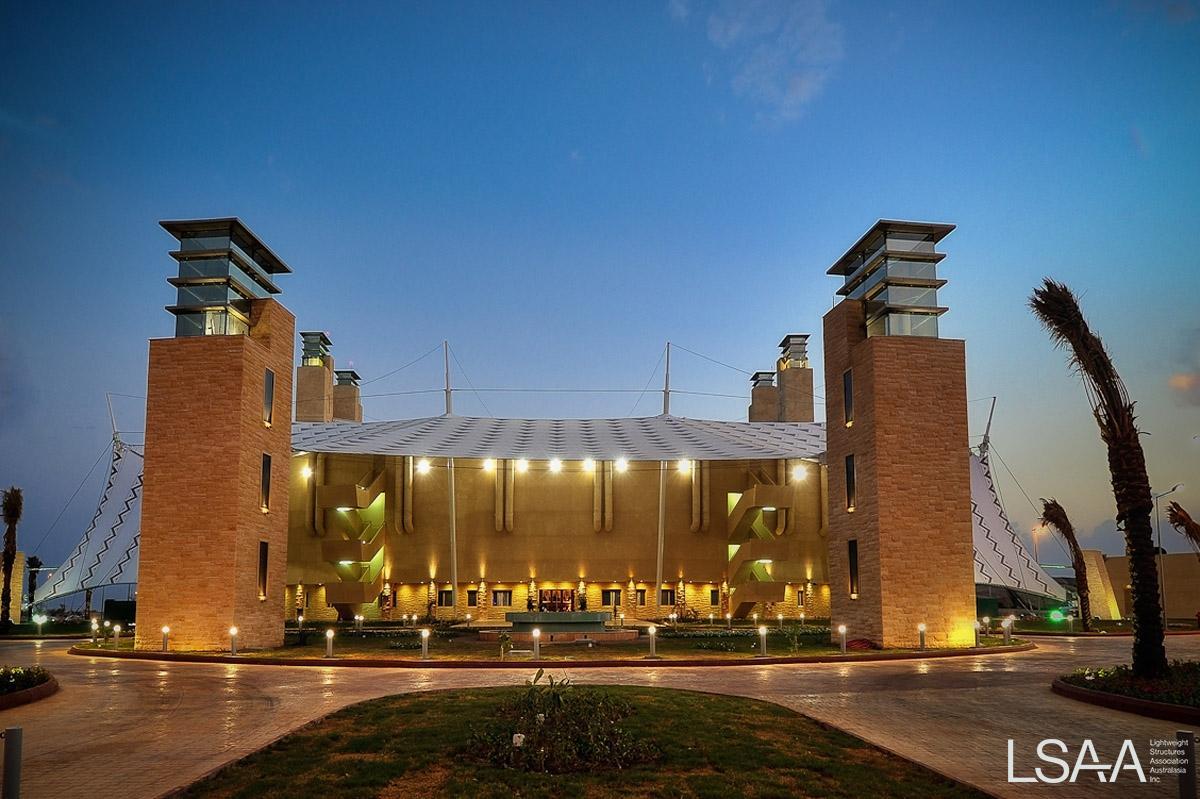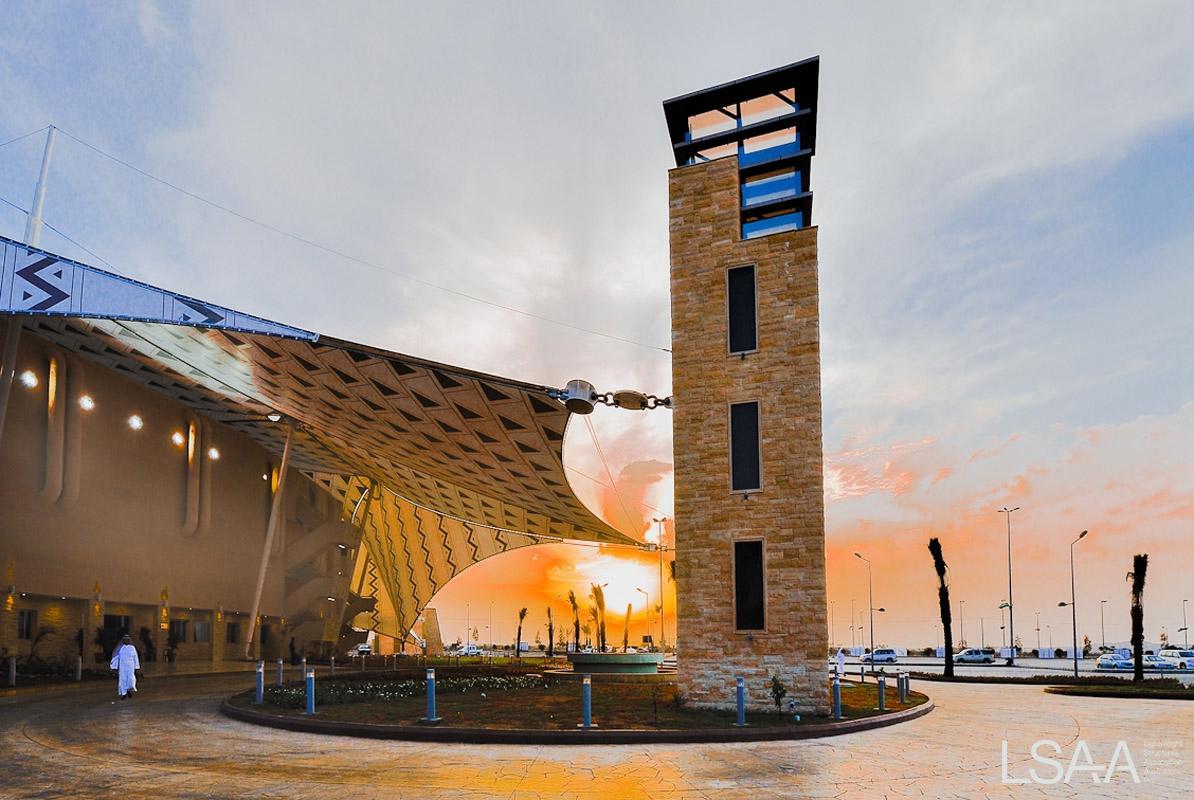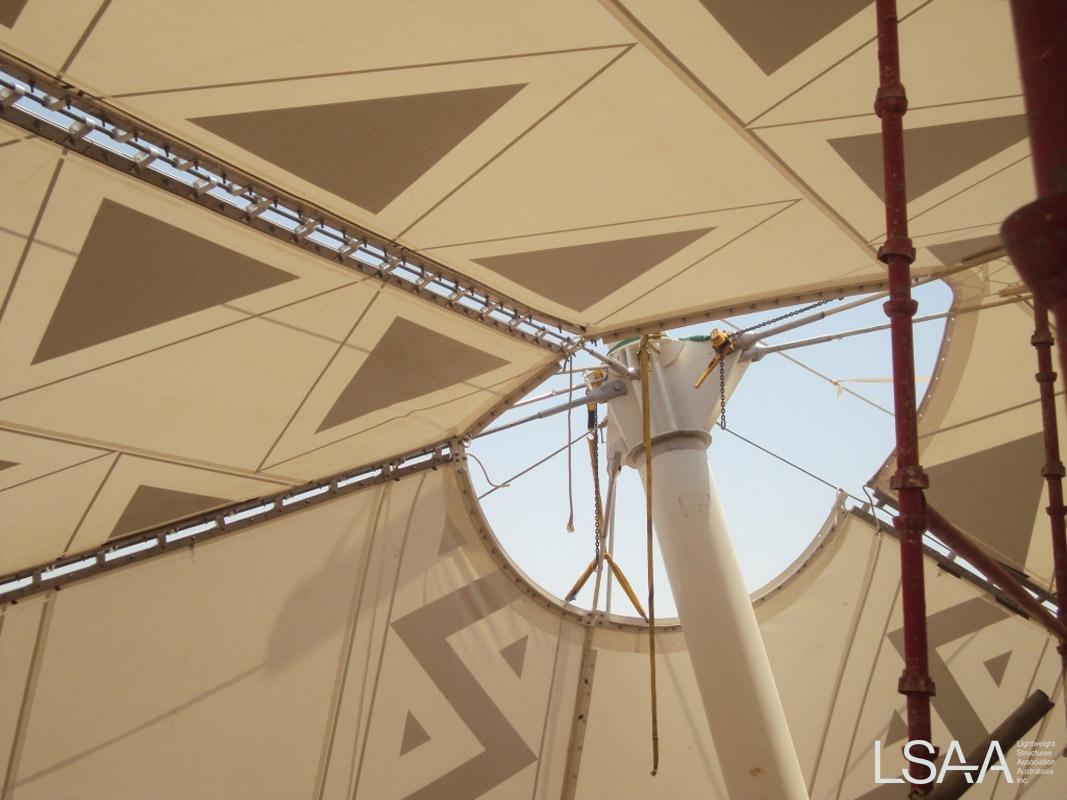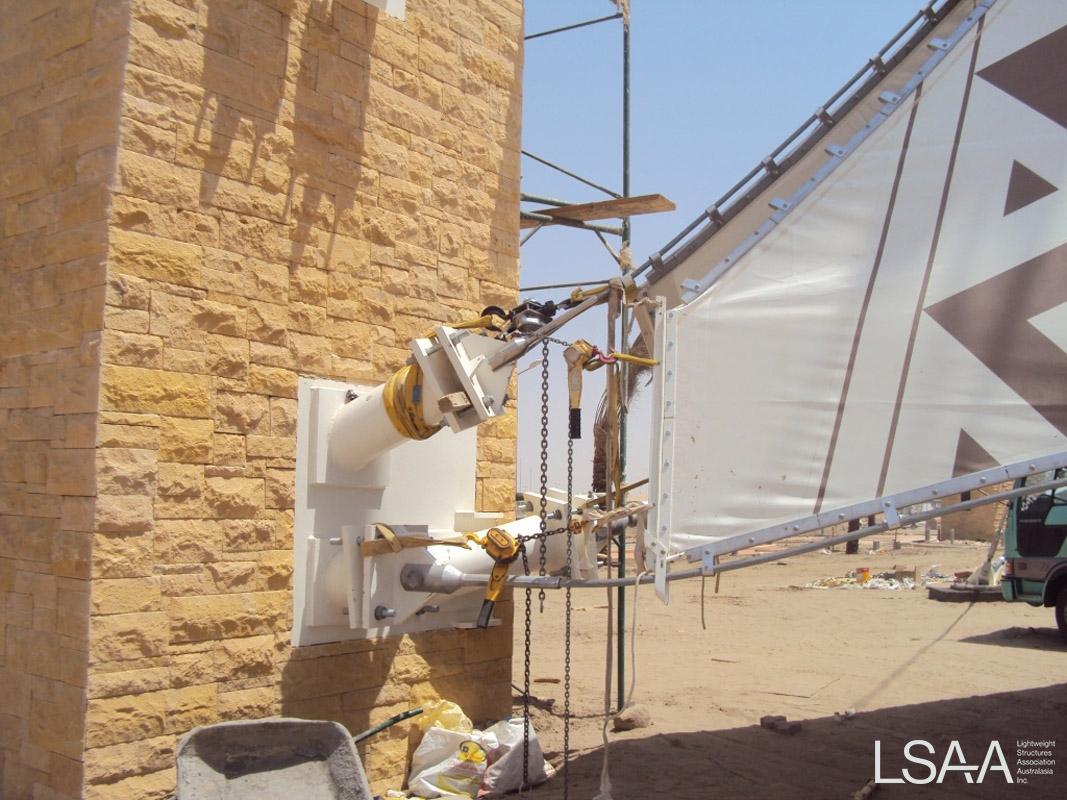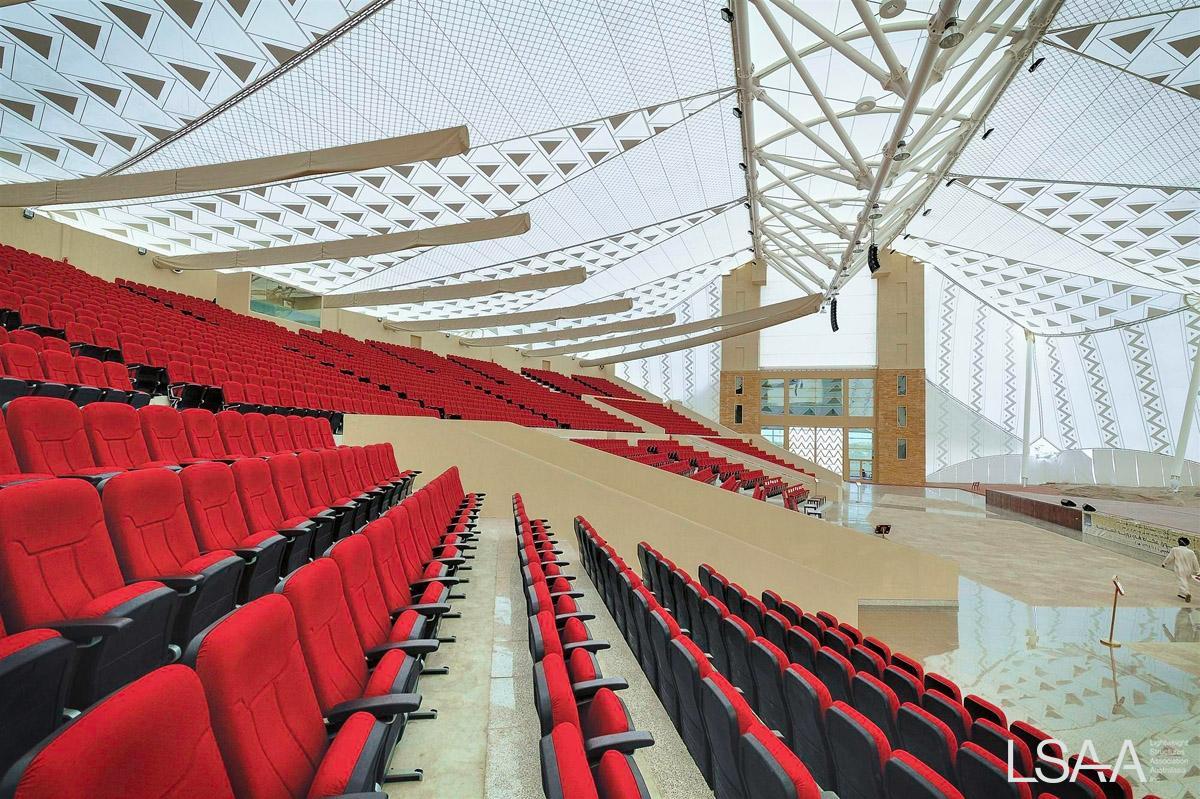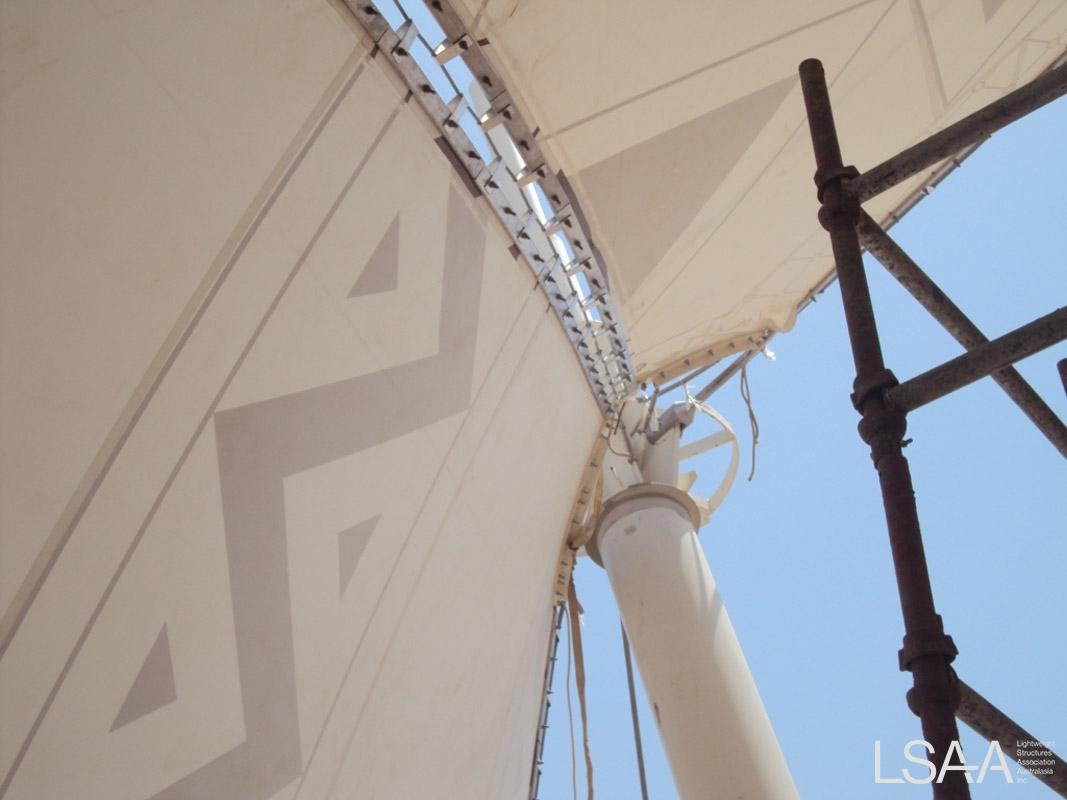LSAA Design Awards 2013 Award of Excellence (Cat 6, ID 4303)
Souk Okaz Public Theatre
Entrant: MakMax Australia
-
Location: Taif City, Kingdom of Audi Arabia
-
Client: Taif City
-
Completion Date: March 2013
Judges Comments:
"Well integrated and designed perfectly for its place."
"This looks to be very successful integration of lightweight elements with solid architecture. There's no sense that the roof has been conceived independently of the rest of the theatre. Lovely tent-like effect; very effective use of pattern on the 'fly sheet'."
PROJECT DESCRIPTION: Decorative roof, culturally significant
The purpose of Souk Okaz Public Theatre was to deliver both a functional public space for cultural activities and evocative ambience reminiscent of the ancient pre-Islamic era of a bustling Bedouin market place.
It provides both modern facilities and an austere tribute to the proud cultural history of the Taif City. The artistic element of this project is its greatest achievement. The unique shapes and textures it depicts are uniquely Arabic; this is of the highest importance to the client and the end users.
MakMax designers took great care in creating this aesthetic as it makes up the character of the project. This project delivers both a functional public space for cultural activities and evocative ambience reminiscent of the ancient pre-Islamic era of a bustling Bedouin market place. It provides both modern facilities and an austere tribute to the proud cultural history of the Taif City.
DESIGN / FABRICATION / INSTALLATION BRIEF
The Souk Okaz was a famous bazaar in the Arabian Peninsula dating back to the pre-Islam era, which served as the Arabic cultural centre where people gathered to hear poets exchange and challenge each other with poems. It was revived in 2008 as The Souk Okaz Festival. The public theatre has a capacity of seating 3,000 people, and serves as a venue for cultural activities such as theatrical plays, poetry competitions and annual poetry festival.
The extremes of the location of this structure shaped the client’s requests for a water tight roof structure, including a porte-cochere, a material that would protect from and withstand both the extremely high UV environment and an abrasive sandstorm prone area. The client’s ambition for this large imposing public space required an extremely large internal clear span area measuring approximately 60m x 65m with a minimum under canopy clearance of 12m, full integration of the structure with the main seating, stage and tower constructions and an embodiment of traditional Arabic design.
The patterns which are geometric shapes and forms used commonly in Arabic traditional mosaic art help blend the membrane into the surrounding architecture and landscape. The membrane structure provides shading from the harsh direct sunlight, while at the same time allowing transmission of natural lighting into the theatre, and serving as a landmark for the theatre and market.
STRUCTURAL SYSTEMS
The artistic element of this project is its greatest achievement. The unique shapes and textures it depicts are uniquely Arabic; this is of the highest importance to the client and the end users. Our designers took great care in creating this aesthetic as it makes up the character of the project.
Founding the tension tie backs was a large challenge as the site contains many holy rocks that were not allowed to be disturbed or moved. Large footings were not allowed and rock anchors had to be used to keep the footing profiles as small as possible. The fabric was required to be printed which presented several challenges in both longevity of the coating in the harsh sun conditions of the Arabian desert and in patterning and fabricating the individual sections to ensure the patterns aligned. The main roof truss spanned 60m between RC towers. Detailed coordination was required with the tower designers to create corbels that could support the truss, allow for thermal expansion and contraction of the steel truss and accommodate the anticipated construction deviations from design of the concrete towers. To achieve this an oversized steel bearing pot was cast into the corbel after the main concrete had cured and was fixed with chemical anchors and a large shear key. The truss bearing plates would then fit into these pots combined with elastomeric bearing pads to allow the required thermal movements.
With a structure this size careful consideration was needed designing joints, allowing for adjustment at connections to ensure that any fabrication and construction inaccuracies could be easily dealt with on site. Many base plates were designed as 2 piece plates, connected with long threaded rods to enable adjustment on site before being welded together with cover plates. The main connections at the porte-cochere are fixed with 89mm bow shackles to Steel CHS beams hidden inside the main tower. Here a complex sleeving system is used to jack the fixing CHS against the wall of the tower using hydraulic rams to achieve the design location of the front membrane plates with the ability to adjust as required.
MATERIALS
A PVC membrane with the capacity to be printed on was chosen in order to fulfill the client’s needs. Hiraoka 312T-IJ was chosen after extensive testing at Taiyo Kogyo’s accredited testing laboratory. Many different print techniques, inks and application processes were trialed. Age testing was also a key part of the membrane test procedure.
FABRICATION
The entire fabric membrane was fabricated at the Taiyo Group’s Shanghai fabrication facility, Shanghai Taiyo Kogyo.
COLLABORATION, CONSTRUCTION AND MAINTENANCE
Midway through the project the client informed us two concrete towers could no longer be constructed due to the location of holy rocks found in the ground. Fabric and cables were already under fabrication and it was too late to start changing geometry. We proposed to replace the large concrete tower with a steel tri-chord truss column that would be founded on small plinth footings fixed into the ground using rock anchors.
Installation planning of the steel and fabric also required detailed consideration; there was not enough room to construct the whole truss on the ground and crane it into position, so 24m high temporary scaffold towers had to be constructed to carefully calculated install loads. The installation of the membrane panels also had to be staged to fit in with other site works, therefore analysis of the partially installed structure was undertaken to determine the temporary bracing required.
Careful coordination with the client and other project stakeholders, combined with our involvement from an early stage of the project, helped us achieve the clients needs. Through creative design solutions we met the brief and then exceeded expectations by quickly resolving issues and providing solutions to other subcontractors’ site issues.
Taiyo Middle East was responsible for the installation of the patterned membrane roofing for this theatre. In addition to the short 60 day construction time frame, installation was challenging due to the windy climate of the area, and the limited access to site. The artistic element of this project is its greatest achievement.
The maintenance schedule at Okaz Public Theatre will include an inspection of the printed membrane as well as the usual structural checks. All maintenance will be carried out by the local Taiyo Kogyo Group Partner, Taiyo Middle East.
OTHER INFORMATION
Souk Okaz Public Theatre opened to great reviews in both the local and national press in Saudi Arabia. Its aims of fitting in to the surrounds and serving as a cultural landmark appear to have been achieved based on the widespread national coverage and reporting of the structure.
Credits:
-
Architect: Diyar Consultants
-
Structural Engineer: MakMax Australia
-
Specialists: MakMax (Designer)
-
Builder: Abdullah Hassan Al Shihry Contractors
-
Fabricator: Shanghai Taiyo Kogyo, Taiyo Middle East
